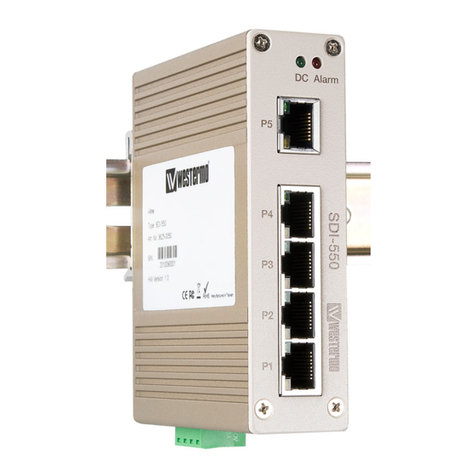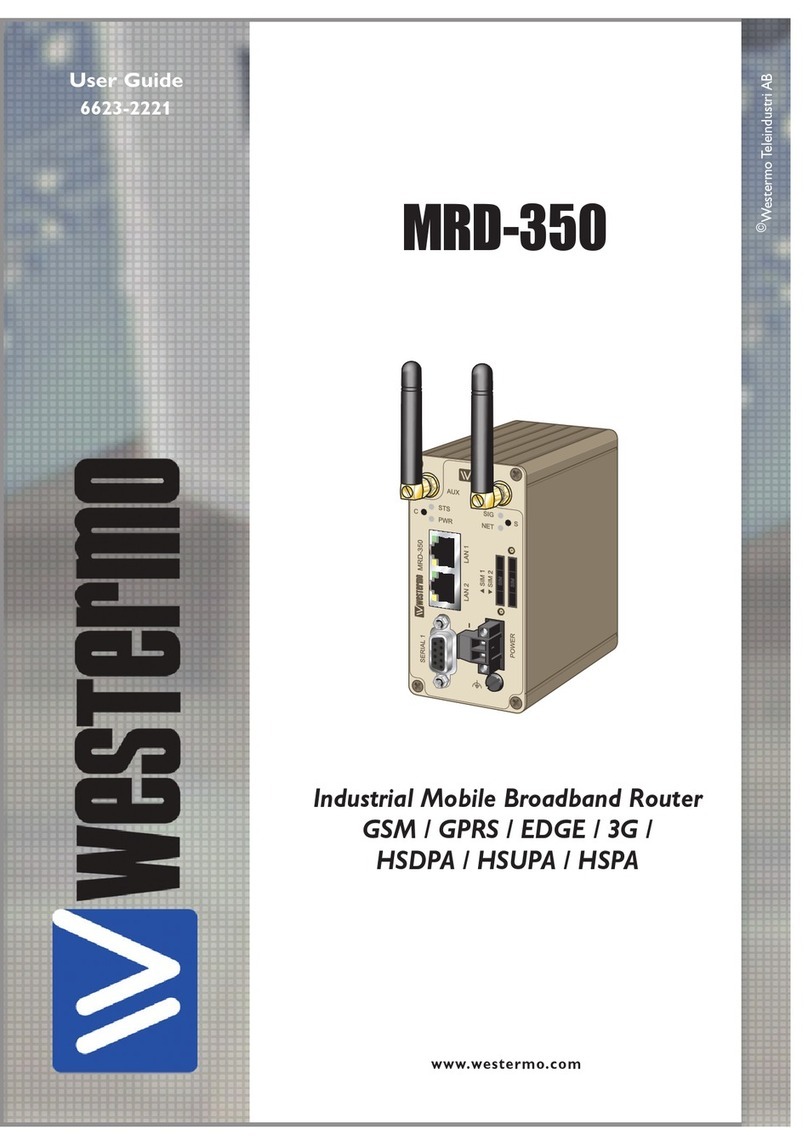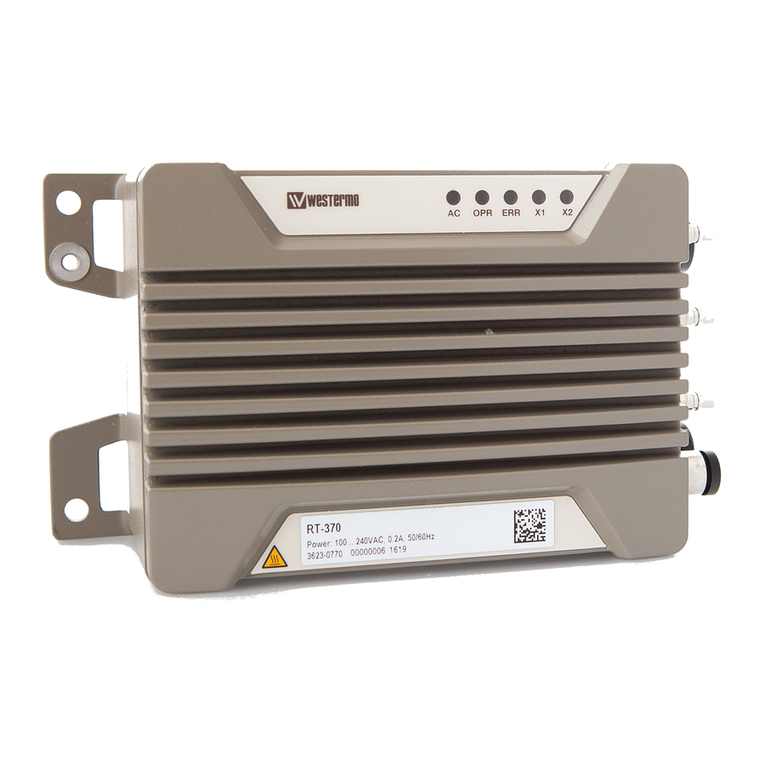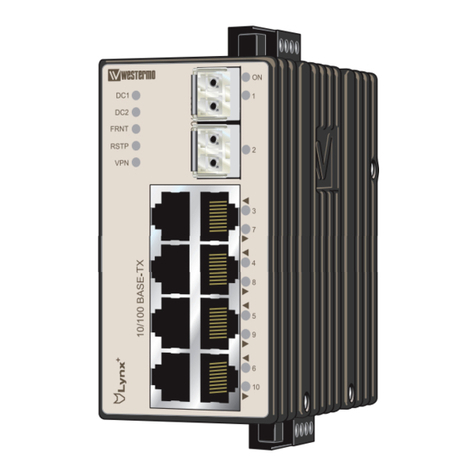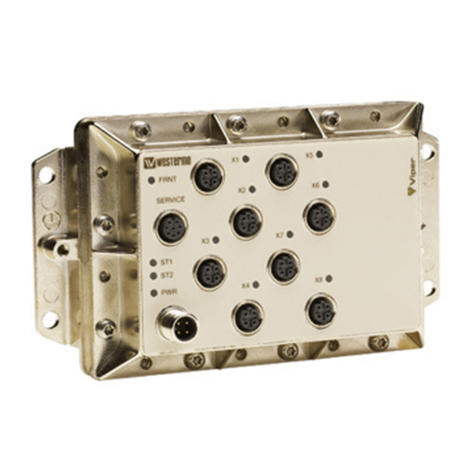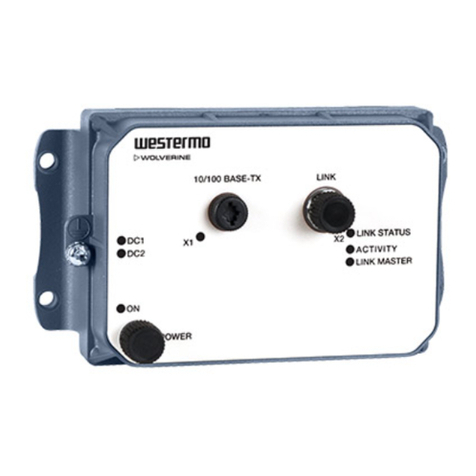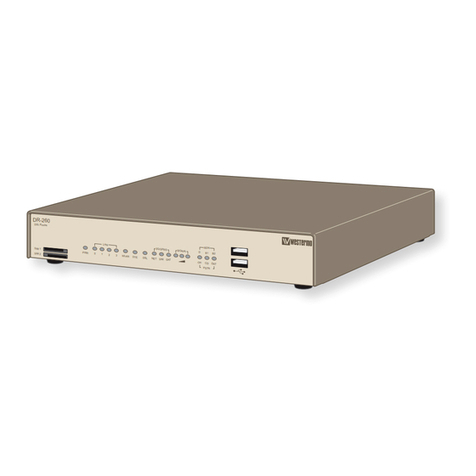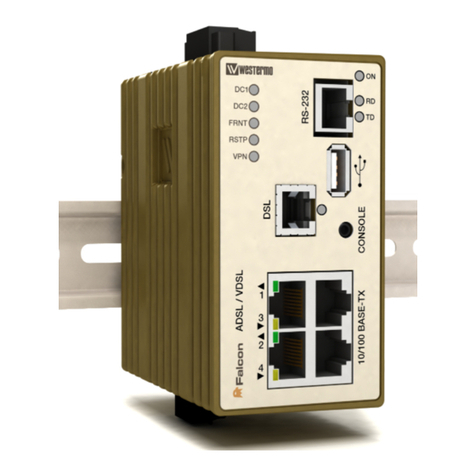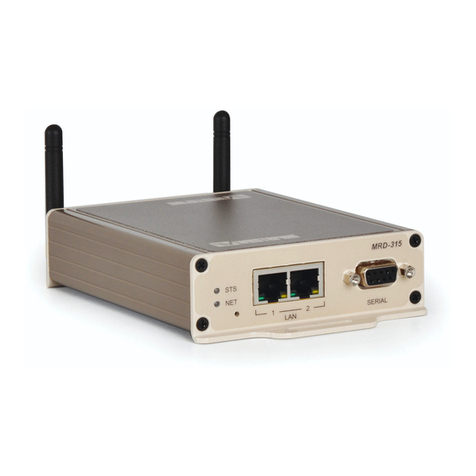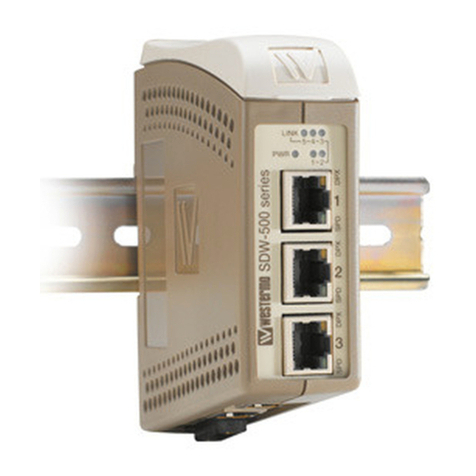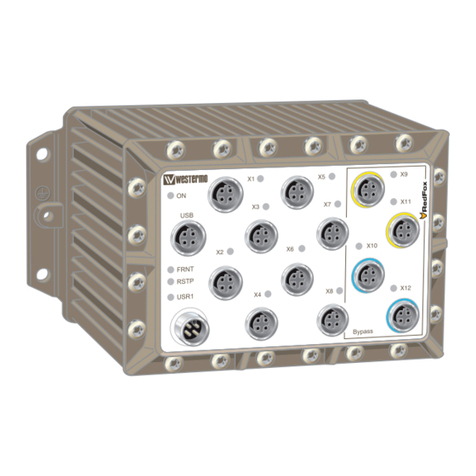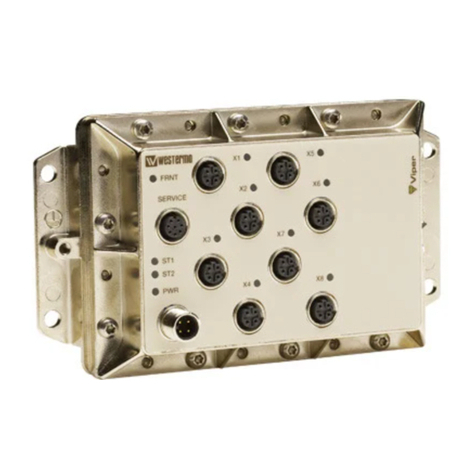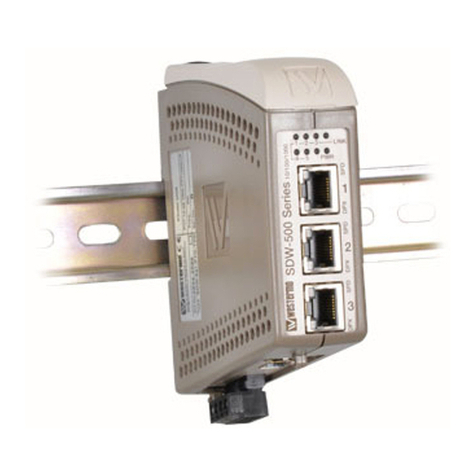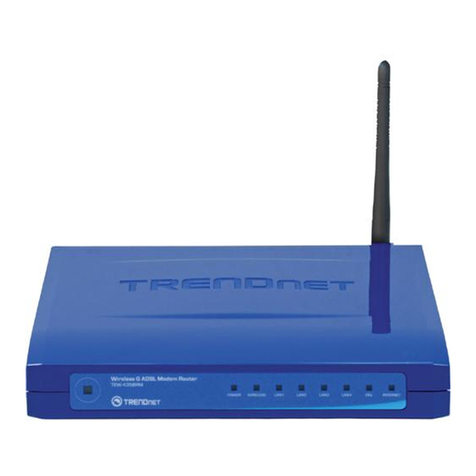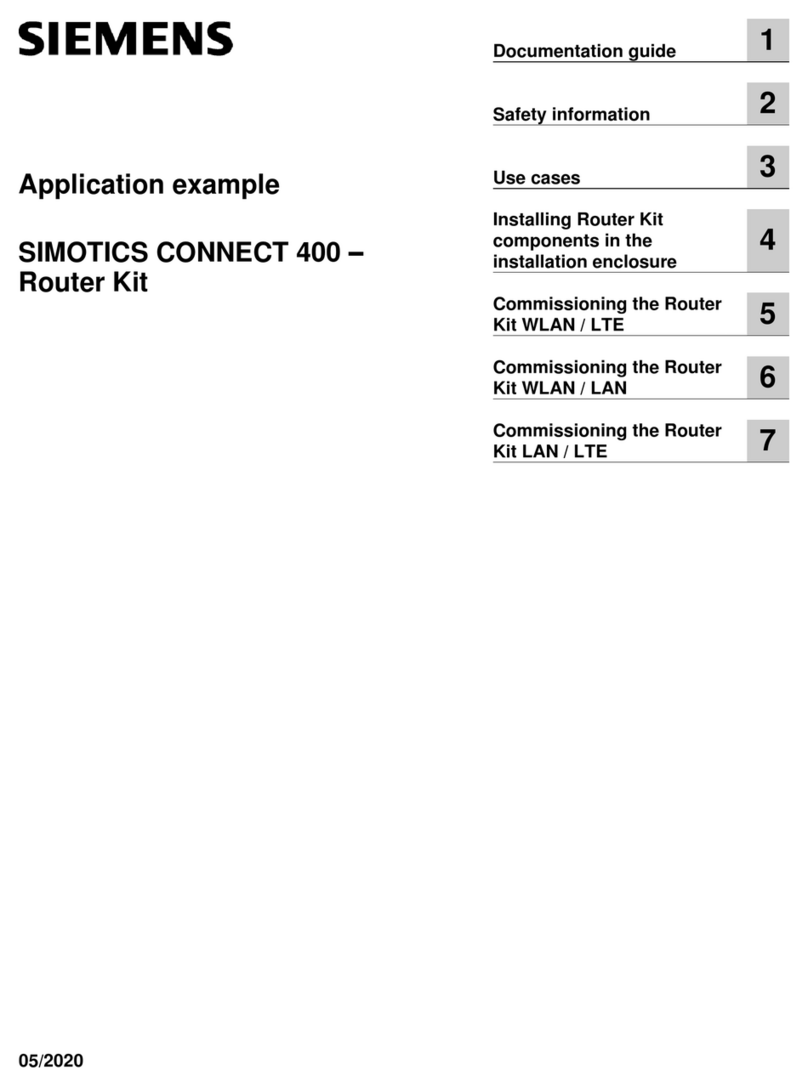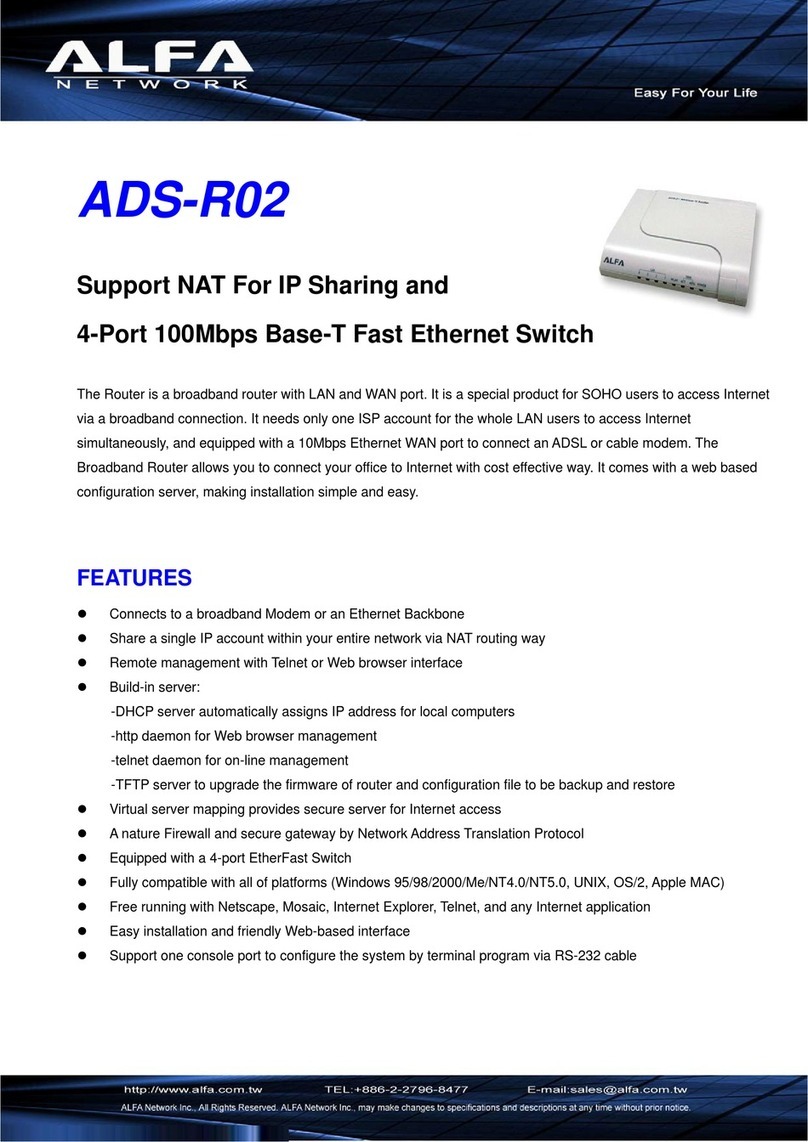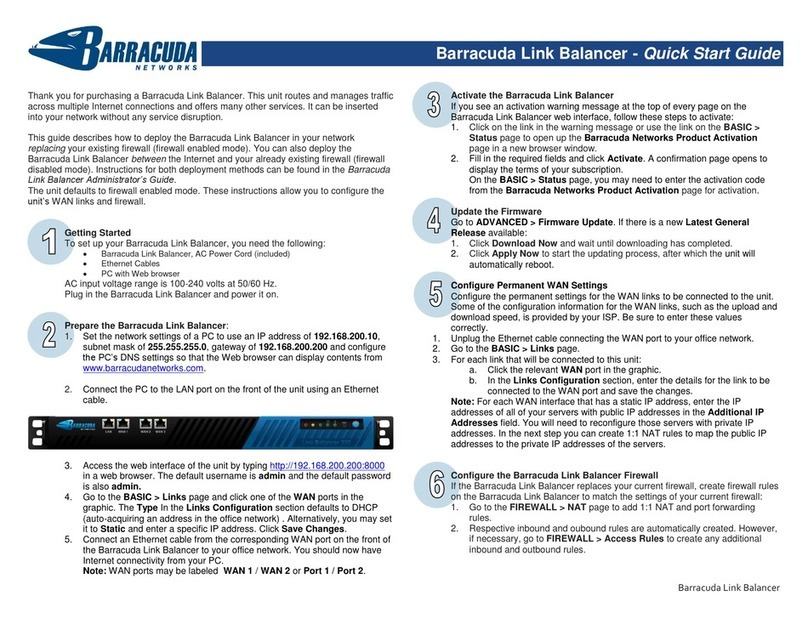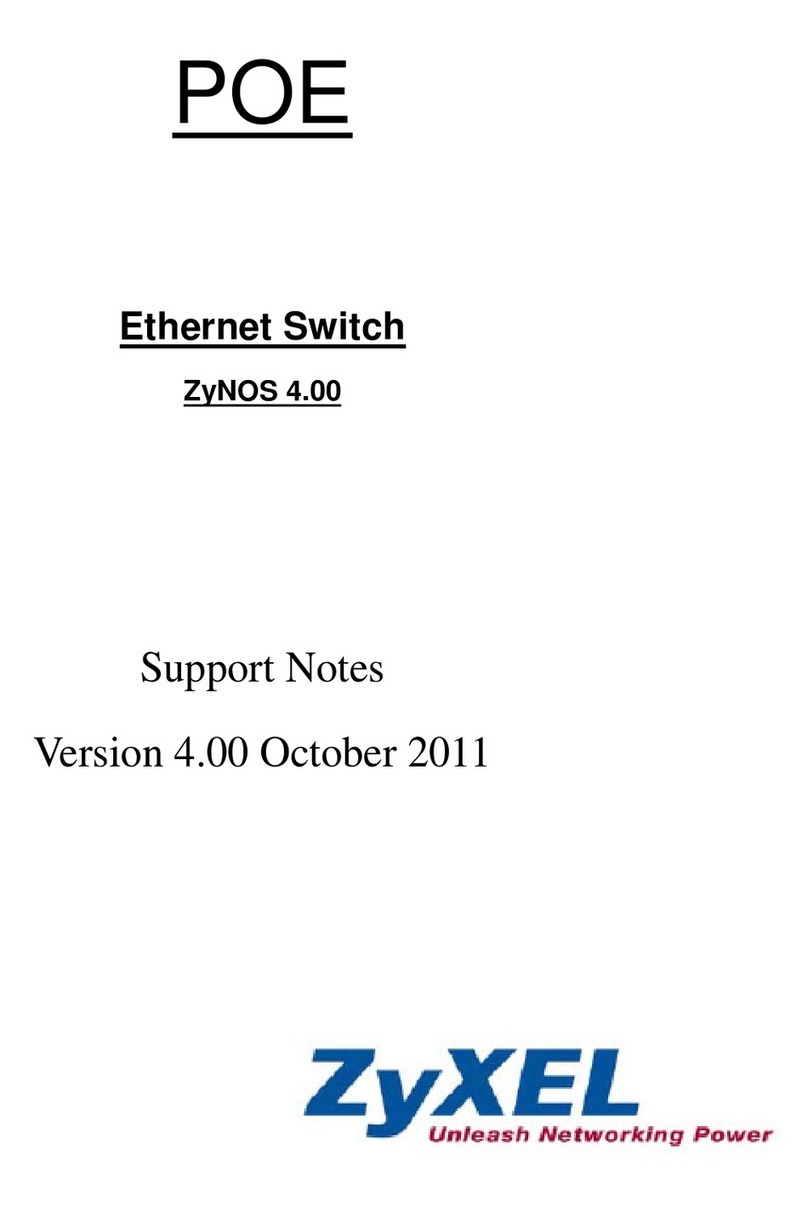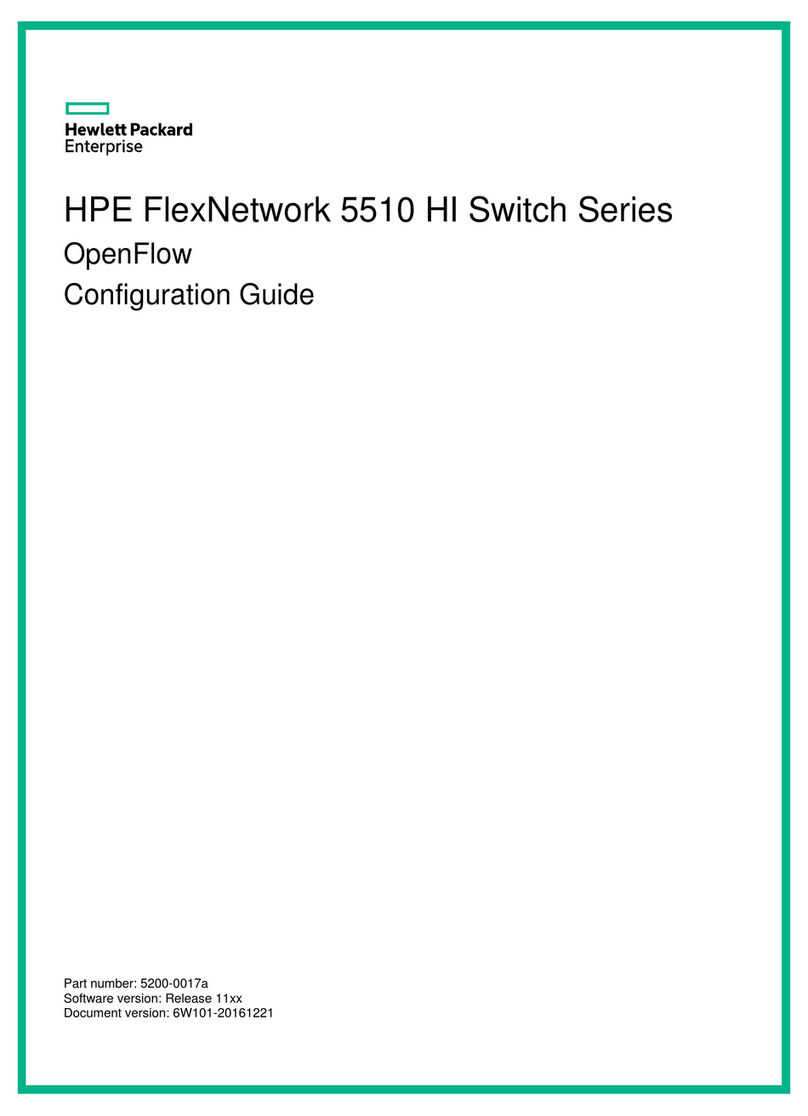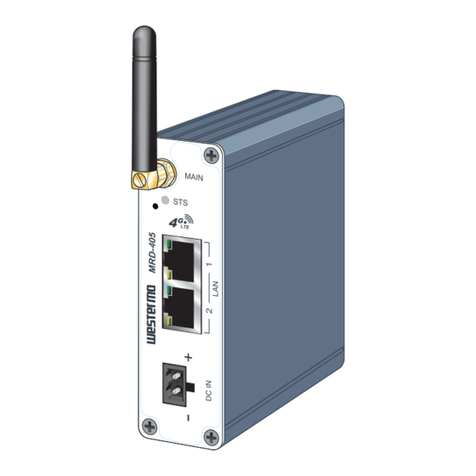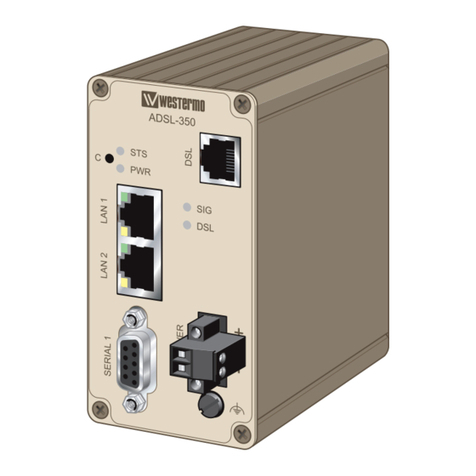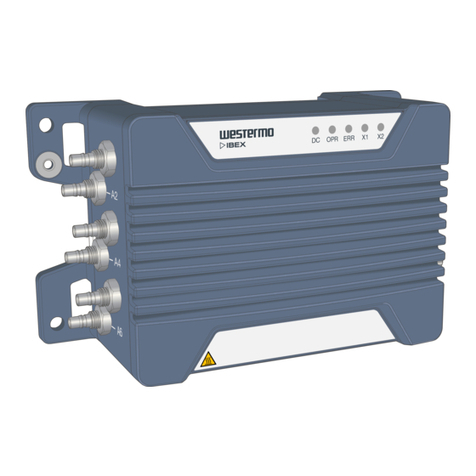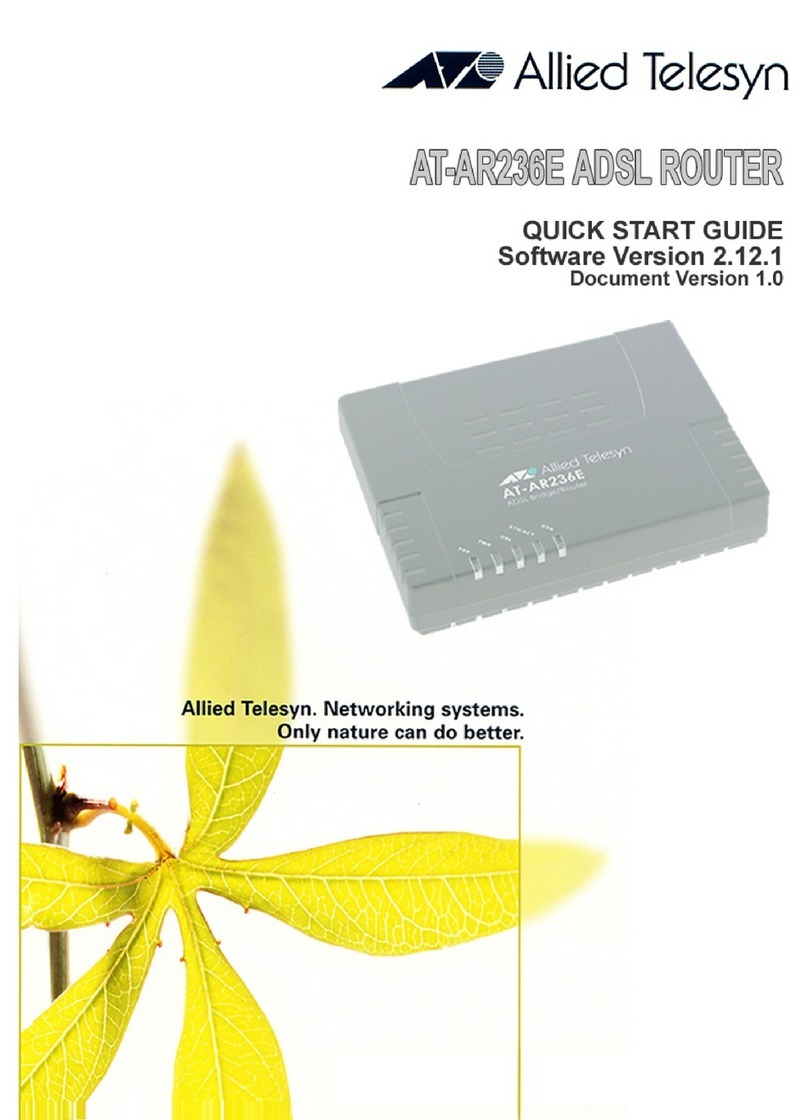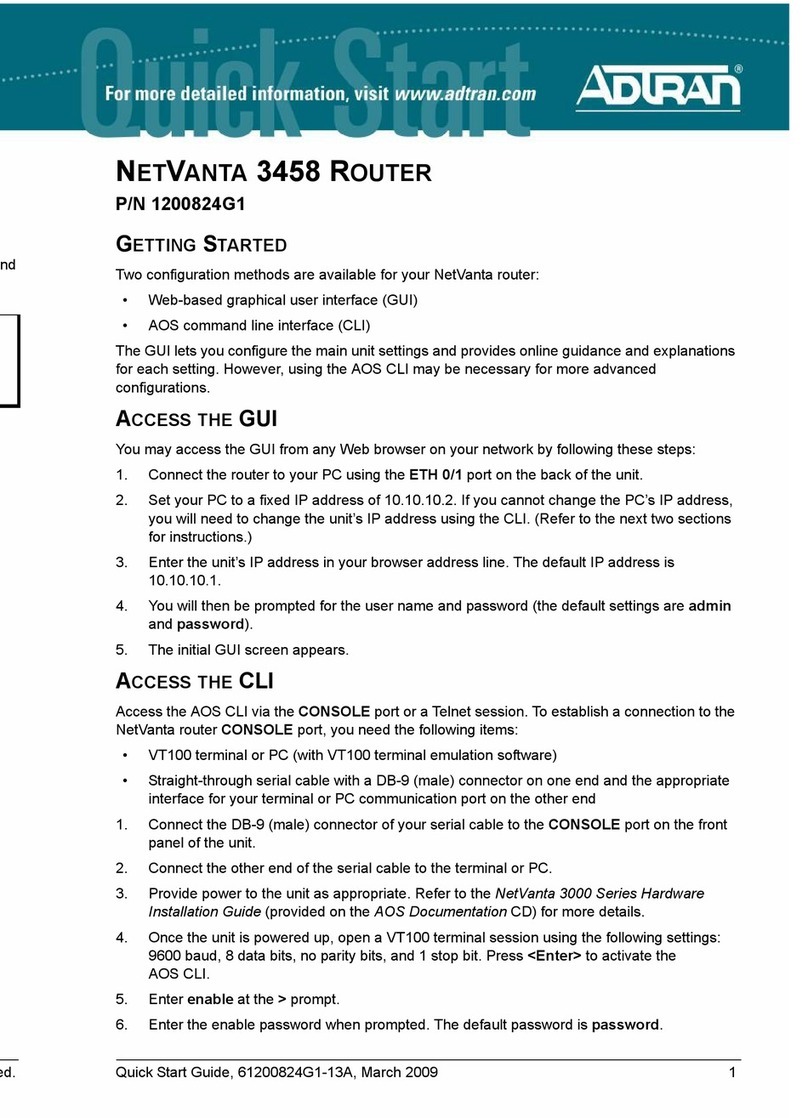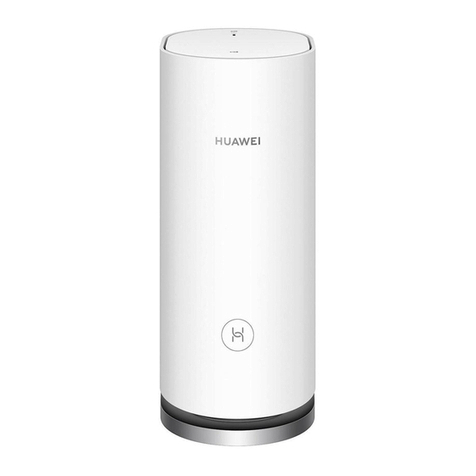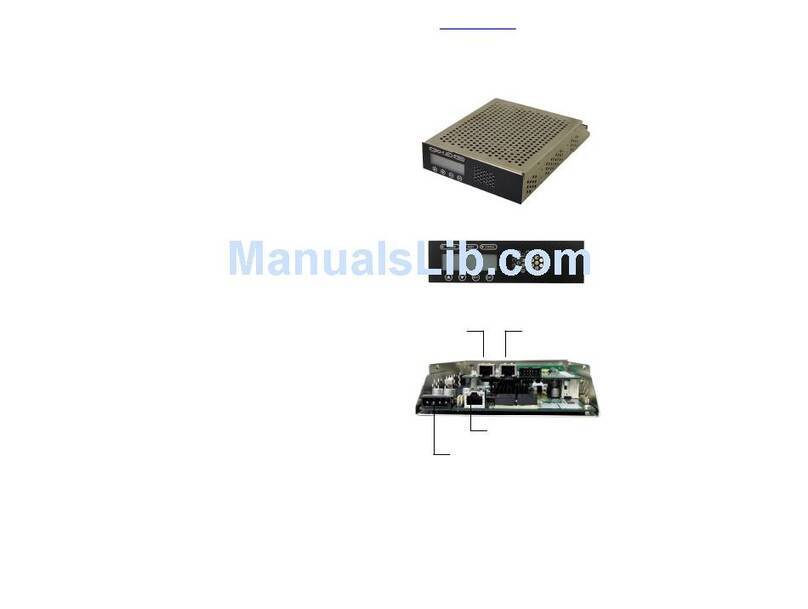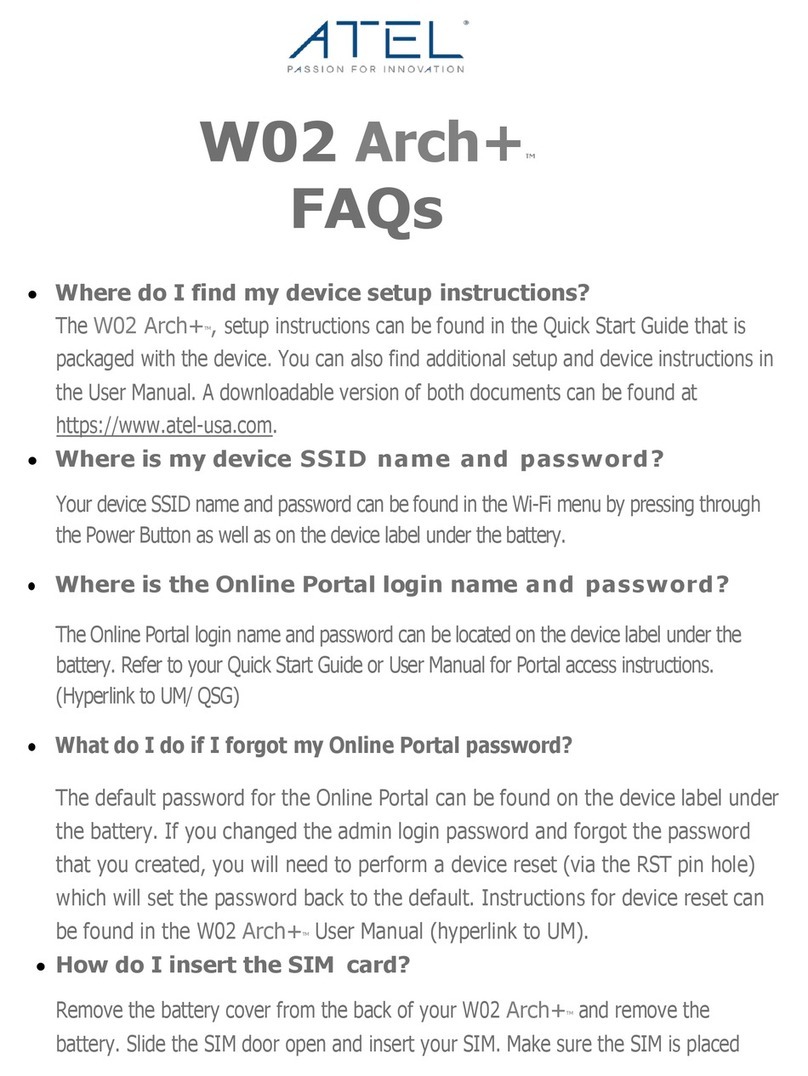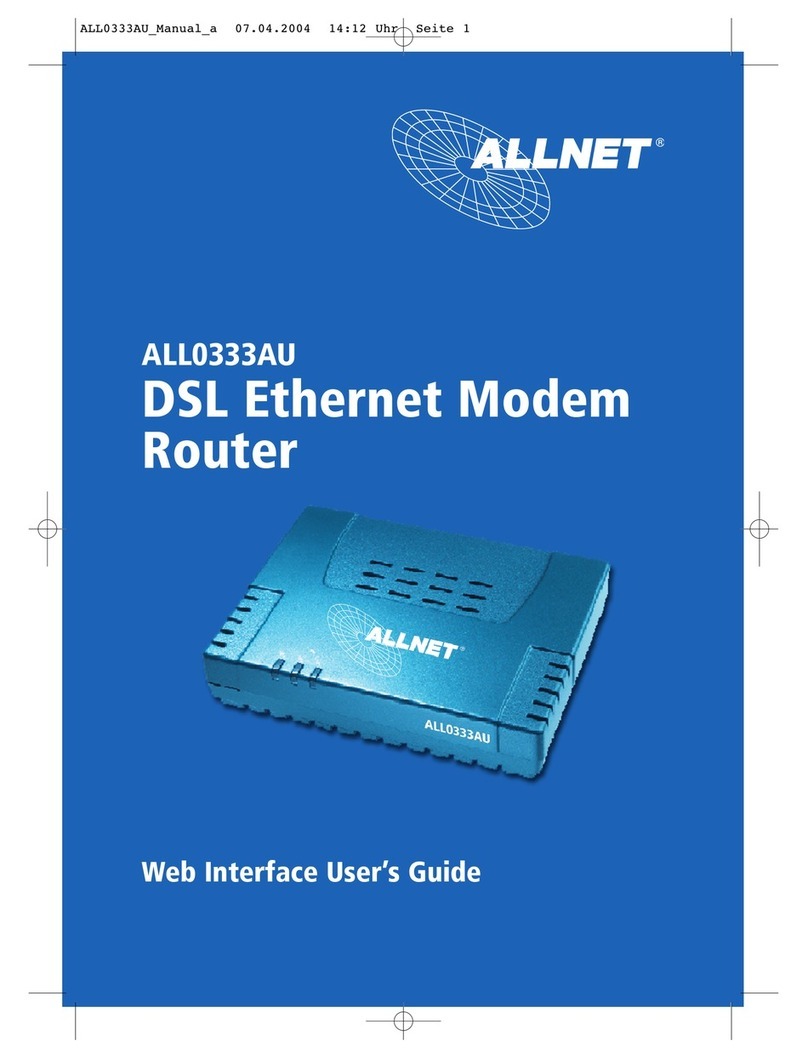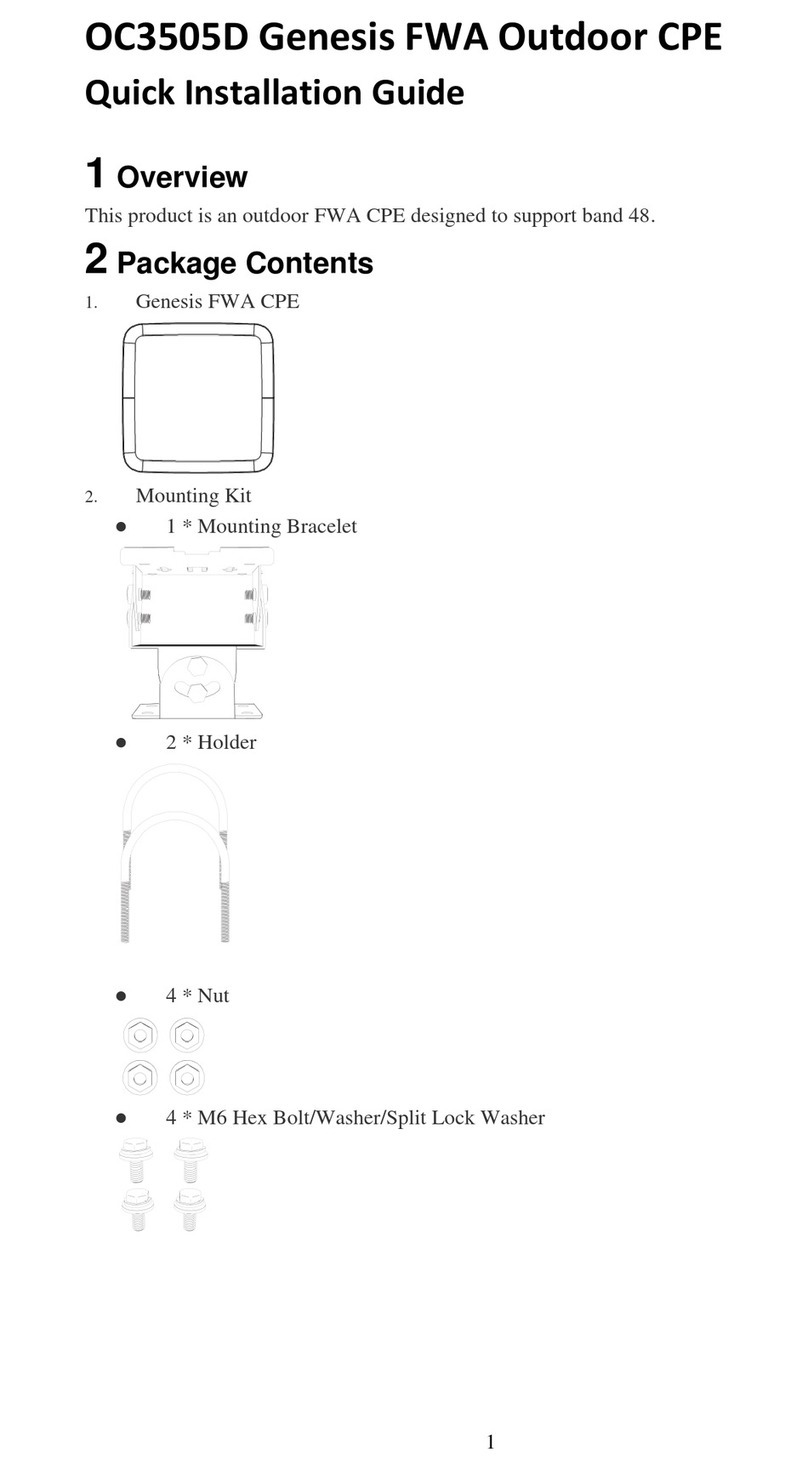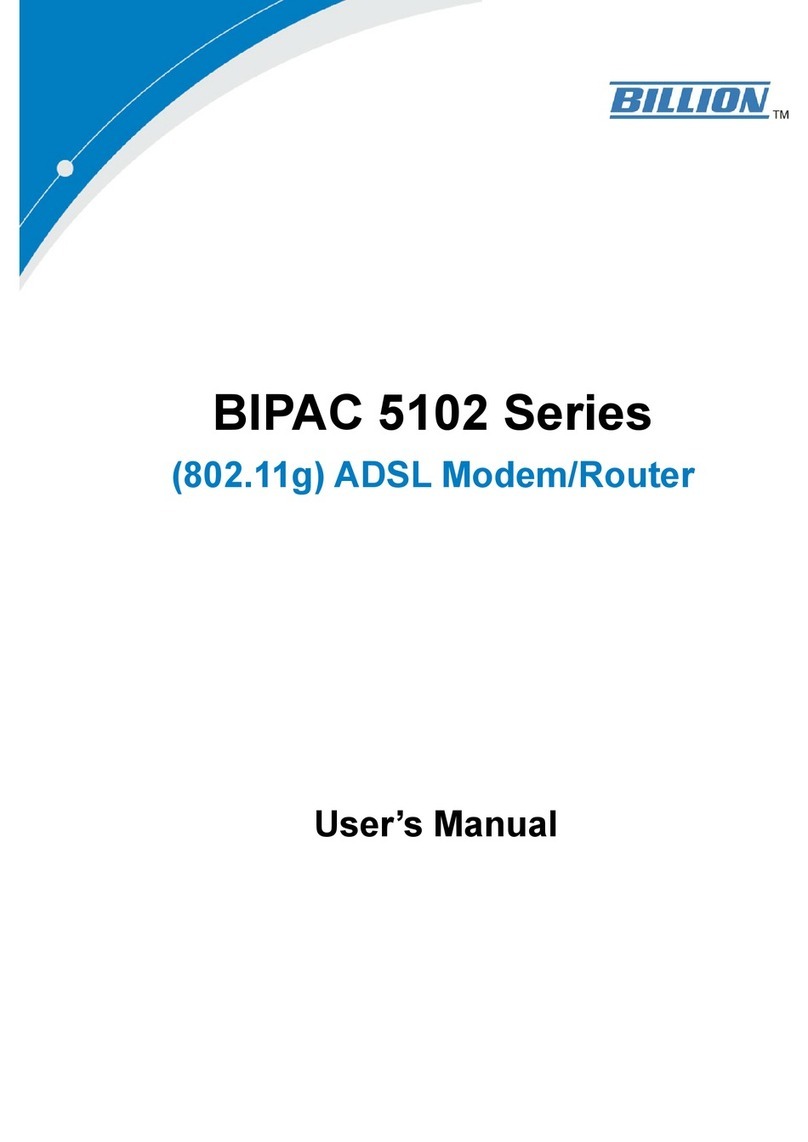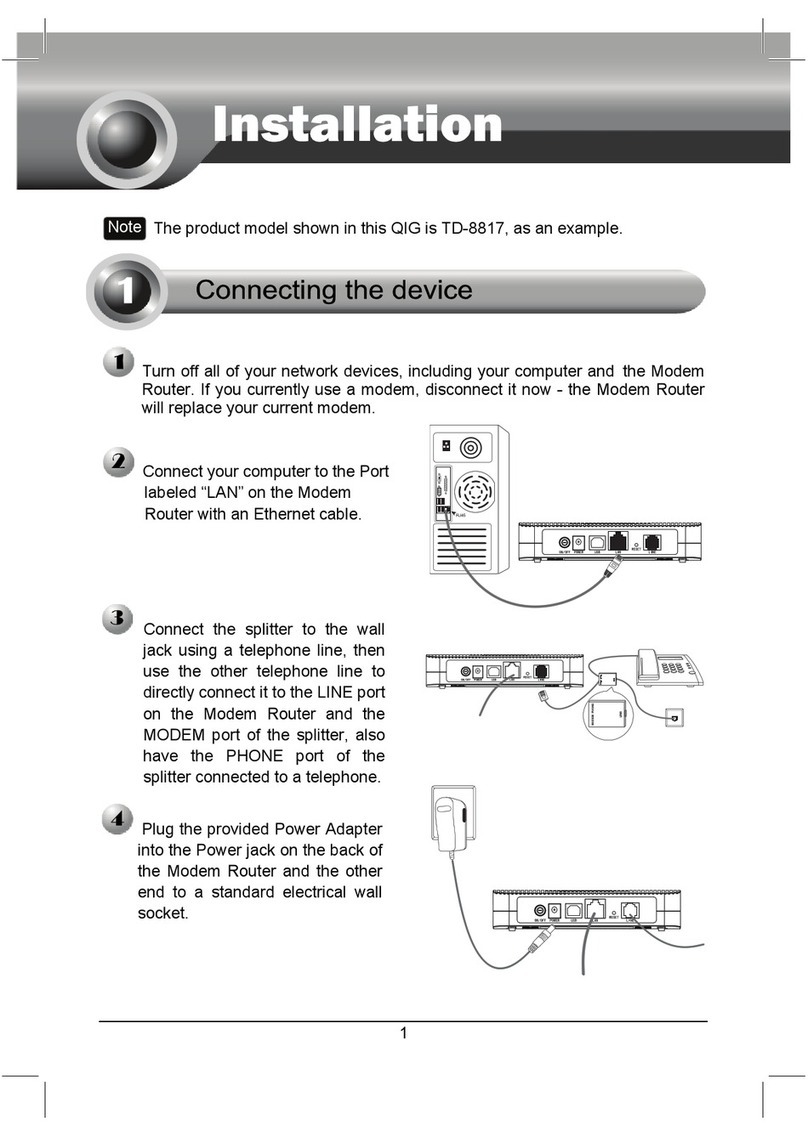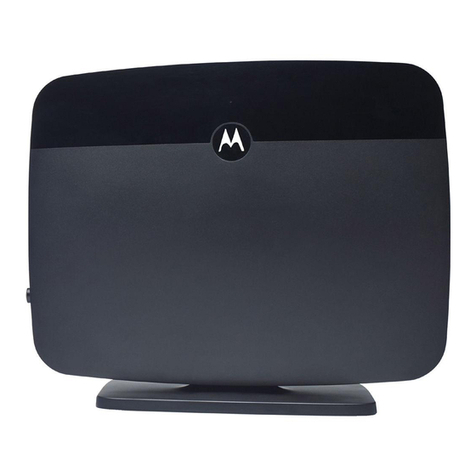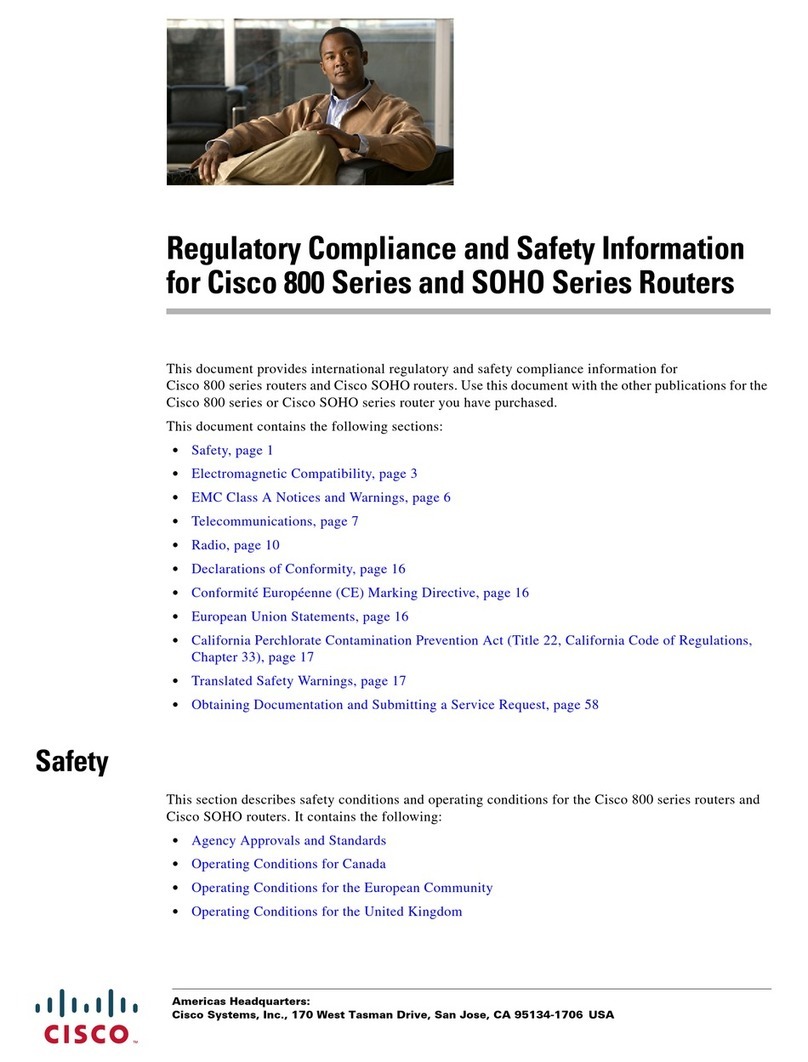7
6620-3201
3 Using the command line interface
Using a Web browser to modify text box or table values in the configuration pages is the simplest way
to configure the unit and this process is described in the next chapter. However, if you do not have
access to a Web browser, the unit can be configured using text commands. These commands may be
entered directly at one of the serial ports or via a Telnet session. Remote configuration is also possible
using Telnet or X.25.
To use the serial ports you will need a PC and some communications software such as
HyperTerminal™ (supplied with Windows) or TeraTerm™. The same commands may also be used to
configure the unit remotely via Telnet, X.25 or V.120.
There are several types of text command:
AT Commands & S Registers
AT commands (pronounced “ay tee”) and Special registers (S registers) are supported in order to
maintain compatibility with modems when the unit is used as a modem replacement.
Application Commands
Application commands are specific to Westermo products and are used to control most features of the
unit when not using the Web interface.
X.3 Commands
These are standard X.3 commands which are used only in X.25 PAD mode
TPAD Commands
These are used only in TPAD mode.
3.1 The “AT” Command Interface
3.1.1 Command Prefix
The “AT” command prefix is used for those commands that are common to modems. To configure the
unit using AT commands you must first connect it to a suitable asynchronous terminal.
You will first need to set the interface speed/data format for your terminal to 115,200bps, 8 data bits,
no parity and 1 stop bit (these settings can be changed later if necessary).
When your terminal is correctly configured, apply power and wait for the B2 indicator to stop flashing.
Unless you have previously configured the unit to automatically connect to a remote system on
power-up, it will now be ready to respond to commands from an attached terminal and is in “command
mode”.
Now type “AT” (in upper or lower case), and press [Enter]. The unit should respond with the message
“OK”. This message is issued after successful completion of each command. If an invalid command is
entered, the unit will respond with the message “ERROR”.
Note:
For consistency AT commands are shown in upper case throughout this guide.
If there is no response, check that the serial cable is properly connected and that your terminal or PC
communications software is correctly configured before trying again.
If you have local command echo enabled on your terminal, you may see the AT command displayed
as “AATT”. If this happens you may use the “ATE0” command (which will appear as “AATTEE00”),
to prevent the unit from providing command echo. After this command has been entered, further
commands will be displayed without the echo.
The “AT” command prefix and the commands that follow it can be entered in upper or lower case.
After the prefix, you may enter one or more commands on the same line of up to 40 characters. When
the line is entered, the unit will execute each command in turn.
